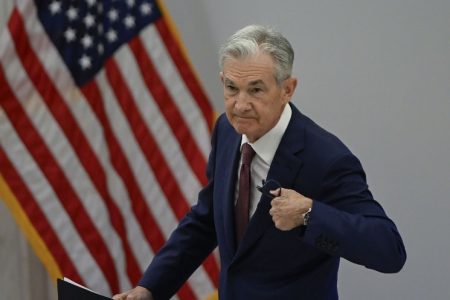Crypto Market Analysis: Record Leverage Wipeout Leaves Capital Intact but Traders Cautious
Beneath the Surface Turbulence, Structural Demand and Liquidity Remain Strong Despite Historic Liquidation Event
The cryptocurrency market is navigating the aftermath of its largest leverage wipeout in history, with leading analysts suggesting that while short-term caution prevails, the fundamental capital structure supporting the ecosystem remains largely intact. According to comprehensive reports from blockchain intelligence firms Glassnode and CryptoQuant, the recent market turbulence represents a significant deleveraging event rather than a fundamental shift in investor confidence or institutional interest.
Despite the dramatic price swings and market volatility, underlying metrics indicate that liquidity conditions and structural demand have held remarkably firm. “The recent correction, while painful for leveraged traders, has primarily removed speculative excess from the system without damaging the core capital base,” noted Glassnode in its weekly market pulse. This assessment is reinforced by data showing that USDT supply has expanded by nearly $15 billion over just 60 days—the fastest growth rate since January—while U.S. spot Bitcoin ETF inflows have continued their upward trajectory, now totaling $3.5 billion. These metrics suggest that despite short-term liquidations, fresh capital continues to enter the ecosystem, potentially setting the stage for renewed strength once market confidence stabilizes.
Where analytical perspectives diverge most notably is on the timing and character of the market’s next phase. Glassnode characterizes the recent sell-off as a necessary structural purge that has forced traders into a more defensive posture, citing reduced funding rates, negative perpetual contract cumulative volume deltas (CVDs), and options traders paying higher premiums for downside protection. This paints the picture of a market in recovery mode—one that needs time to digest losses and rebuild confidence rather than immediately rebounding. CryptoQuant, meanwhile, adopts a more constructive outlook, highlighting the crucial $115,000 level—which represents the traders’ on-chain realized price—as a key threshold to monitor for renewed bullish momentum. According to their analysis, a sustained move above this price point could signal the beginning of a fresh upward cycle supported by expanding stablecoin liquidity and continued accumulation by whale investors.
Market Movements Reflect Cautious Sentiment Amid Macroeconomic Crosscurrents
Bitcoin retreated to approximately $112,700 after briefly dipping below the $110,000 mark during Tuesday’s trading session. This price action reflects ongoing profit-taking and heightened concerns surrounding renewed trade tension rhetoric from former President Trump, which has broadly pressured risk assets. However, cryptocurrency prices found some stability following Federal Reserve Chair Jerome Powell’s statements indicating that the central bank may be approaching the conclusion of its monetary tightening cycle—a development generally considered supportive for digital assets and other non-yield-bearing investments.
Ethereum has similarly experienced downward pressure, trading around $4,101 and registering a 3.7% decline as open interest dropped to its lowest level since May. Technical analysts note that ETH faced rejection near the $4,270 resistance level, accelerating profit-taking across derivative markets. Despite these short-term headwinds, institutional support appears to remain robust, as evidenced by continued activity on CME futures and steady ETF inflows. Meanwhile, traditional safe-haven assets continue strengthening, with BlackRock’s Evy Hambro projecting that gold could advance well beyond $4,200 per ounce as paper currencies undergo a repricing against real assets. Bank of America has adopted an even more bullish outlook, forecasting gold to reach $5,000 and silver $65 by 2026, citing persistent fiscal deficits, heightened investor demand, and fundamental shifts favoring tangible assets despite the potential for near-term consolidation.
Asian markets showed resilience Wednesday morning, with Japan’s benchmark Nikkei 225 index opening 0.3% higher. This modest gain comes despite elevated volatility stemming from escalating U.S.-China trade tensions and potential “retribution” policies mentioned in recent statements from President Trump. The contrasting movements between traditional equity markets and digital assets highlight the complex interplay between macroeconomic factors and sector-specific dynamics currently influencing investor sentiment across global financial markets.
Analyzing the Leverage Reset: Institutional Capital Versus Speculative Traders
The recent market correction has drawn a clear distinction between speculative leverage and core institutional positioning. According to Glassnode’s analysis, the sell-off represented a “leverage reset” rather than a fundamental shift in long-term investment thesis. Data indicates that while short-term traders experienced substantial liquidations, institutional capital remained largely steadfast, suggesting a more mature market structure than in previous cycles. “What we’re witnessing is a healthy recalibration of risk,” explained a senior market analyst at a major cryptocurrency exchange. “The speculative froth has been removed, but the foundation of institutional investment—particularly through regulated vehicles like ETFs—continues to provide essential support.”
This differentiation between speculative and institutional capital flows is particularly evident in derivatives markets, where funding rates have normalized from their previously elevated levels and open interest has contracted significantly. Options markets similarly reflect a more balanced positioning, with implied volatility curves showing increased demand for protective strategies rather than leveraged directional bets. These metrics collectively suggest a market that has transitioned from excessive optimism to a more measured equilibrium—a development that many long-term investors view as constructive for sustainable growth.
The contrasting interpretations from research firms regarding market direction highlight a fundamental truth about the current state of digital asset markets: we are in a transitional phase where excessive leverage has been purged, but the timing of renewed upward momentum remains uncertain. “The market is now searching for equilibrium,” noted a veteran cryptocurrency fund manager. “The question isn’t if capital will return, but when and at what pace confidence will be restored to support the next phase of price discovery.”
Regulatory and Industry Developments Continue to Shape Market Landscape
Beyond price action and market structure, significant developments in the regulatory and operational landscape continue to influence the broader cryptocurrency ecosystem. Major exchange Binance has forcefully rejected allegations surrounding its token listing process, characterizing such claims as “false and defamatory” while asserting that it “does not profit” from these activities. This statement comes amid heightened scrutiny of exchange practices globally and ongoing efforts to establish more transparent operational standards across the industry.
Meanwhile, speculation continues to swirl regarding potential shifts in the U.S. regulatory approach following the recent election. Social media personality Laura Loomer has sparked controversy by suggesting the possibility of a presidential pardon for former FTX CEO Sam Bankman-Fried, though market analysts largely dismiss these claims as unfounded speculation rather than credible policy signals. “The market is certainly pricing in regulatory changes under the incoming administration,” explained a legal expert specializing in digital asset regulation. “However, specific outcomes remain highly uncertain, and investors should be cautious about making decisions based on unverified speculation.”
In a positive development for creditors of failed cryptocurrency lender Celsius Network, reports indicate that its wind-down process has secured approximately $300 million in funding from stablecoin issuer Tether, according to information from GXD Labs and VanEck. This infusion of capital potentially accelerates the recovery process for affected users who have been awaiting resolution since the platform’s collapse during the previous market downturn, underscoring the industry’s ongoing efforts to address the fallout from earlier excesses while establishing more sustainable practices moving forward.
Outlook: Capital Flows Signal Longer-Term Optimism Despite Near-Term Caution
As the cryptocurrency market navigates this transitional period, the contrast between short-term trading patterns and longer-term capital flows provides crucial context for understanding the potential trajectory ahead. While leveraged traders and momentum-focused participants have clearly adopted a more cautious stance—evidenced by reduced funding rates, lower open interest, and defensive options positioning—the continued influx of institutional capital through ETFs and expanding stablecoin reserves suggests underlying confidence in the asset class’s long-term proposition.
“What we’re witnessing is a bifurcation between tactical positioning and strategic allocation,” explained a senior investment strategist at a digital asset management firm. “Short-term traders are understandably defensive following the leverage wipeout, but institutional capital continues to flow into the ecosystem at a remarkable pace.” This divergence creates a nuanced market environment where near-term price action may remain choppy while the foundation for future appreciation continues to strengthen beneath the surface.
The key variables that will likely determine the market’s next significant move include the speed at which trader confidence recovers, broader macroeconomic conditions—particularly regarding Federal Reserve policy and inflation expectations—and potential regulatory developments under the incoming administration. Market participants are closely monitoring the $115,000 level identified by CryptoQuant as a crucial threshold that could signal renewed bullish momentum if sustainably reclaimed. However, most analysts agree that regardless of near-term price action, the structural demand for digital assets remains intact, supported by expanding stablecoin liquidity, continued ETF inflows, and institutional adoption that shows no signs of reversing despite recent volatility.
As one veteran market observer summarized: “The leverage has been flushed, but the capital remains. The question isn’t if the market will recover, but how quickly confidence will return to support the next leg of this cycle.” In this environment of cautious recalibration, both retail and institutional investors appear to be reassessing risk parameters while maintaining their fundamental exposure to the digital asset ecosystem—a potentially constructive setup for more sustainable market dynamics going forward.













